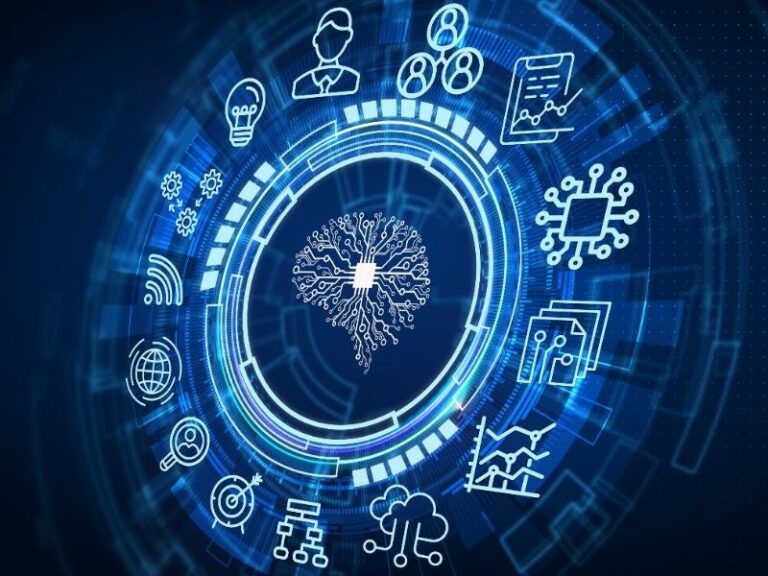Understanding the differences between business intelligence, artificial intelligence, and data analytics can be a challenge to many people. For many business processes, there seems to be so much overlap that it’s difficult to know where one technology ends and the other begins — or even whether these technologies can be used concurrently.
SEE: What Is ETL? (TechRepublic)
What is business intelligence?
BI is a broad category of information management, analysis, and reporting that operates on both structured and unstructured data. It can yield insights for organizations about their markets, the “fit” of their products and services in these markets, and the effectiveness of their internal operations.
The BI toolkit is far-reaching. It can include:
- Standard reporting is the generation of regular, routine reports, such as financial statements.
- Analytics reporting goes beyond standard reporting by analyzing data to uncover deeper insights and patterns.
- Data mining involves exploring large datasets to discover patterns, correlations, and insights.
- Dashboards are visual representations of key metrics and data points that provide a way to monitor business performance at a glance.
- Performance management involves tracking and managing the performance of an organization.
- Implementations of AI in BI involve using machine learning algorithms and other AI technologies to automate analysis.
Collectively, it is the orchestration and implementation of all of these technologies that comprise the operations of BI for an organization.
SEE: How to Use AI in Business (TechRepublic Premium)
What is artificial intelligence?
AI is a technology that uses pattern recognition to perform tasks that require intelligence at a scale that would be difficult or impossible for humans. In BI, AI typically combines insights from subject-matter experts and research with machine learning algorithms to identify patterns in data. The AI then begins to draw inferences based on this.
AI relies heavily on complex statistical algorithms developed by data scientists to interrogate an array of both structured and unstructured data. In this way, AI can produce insights for decision support. It can be used to autonomously operate processes without human intervention.
For example, one use case for AI is in the credit card industry, where a system is trained to look at consumer card usage patterns and identify possible fraudulent behavior.
SEE: What Is Data Quality? (TechRepublic)
What is data analytics?
Data analytics operates on both structured and unstructured data to support decision-making. It uses standard report-style queries as well as more complex AI algorithms that find unique patterns in data and deduce insights from them.
Several types of analytics are widely used across organizations — such as marketing, operations, finance, customer service, IT, and HR.
These types can be:
- Diagnostic: This investigates the causes of past events or outcomes, which helps users understand the factors or actions that gave rise to a particular result. For example, a rise in sales in the last quarter.
- Descriptive: Historical data is summarized and interpreted to understand an event or outcome. For instance, whether a company met its KPIs.
- Predictive: This uses statistical data methods and machine learning algorithms to predict future outcomes based on historical data. For example, manufacturers can use predictive algorithms to monitor for infrastructure failure.
- Prescriptive: This goes beyond predicting future events to suggesting actions that can be taken to influence desired outcomes. For example, analyzing past online buyer behavior and influences.
SEE: How to Measure Data Quality (TechRepublic)
What are the differences between BI, AI, and data analytics?
BI, AI, and analytics all deliver insights that enable organizations to perform better, predict the future, and meet the needs of their markets. However, there are some fundamental differences between these concepts in scope and function.
BI is an overarching framework for analytics and AI. In contrast, analytics can be used in more of a standalone fashion if desired. For instance, a sales team may purchase analytics software, so it can assess markets.
AI automates reasoning processes to either eliminate or reduce human work. For example, an industrial robot with onboard AI may perform an operation on a manufacturing assembly line that a human previously carried out.
SEE: Data Governance in Entertainment (TechRepublic)
Can you use BI, AI, and data analytics together?
Analytics and AI can be integrated into a larger BI framework, but they don’t have to be. The advantage of integrating analytics tools and AI into a BI tech stack is that you have an end-to-end data management, decision-making, and operational infrastructure for your enterprise.
If you choose to do this, the first step is to develop the BI framework that will accommodate both the analytics and the AI. The next step is to populate this framework. For example, where in your organization are you going to use analytics, where will you automate with AI, and how will you facilitate data sharing throughout your entire company?
SEE: Data Governance Frameworks: Definition, Importance, and Examples (TechRepublic)
Further reading
If you feel inclined to explore these intriguing topics more, check out TechRepublic’s articles on AI and data.
TechRepublic Premium also offers AI and data-related glossaries, hiring kits, policies, and checklists to enhance the work of IT and HR departments.
This article was originally published in June 2022. An update was made by the current author in November 2023. The latest update was by Antony Peyton in June 2025.

